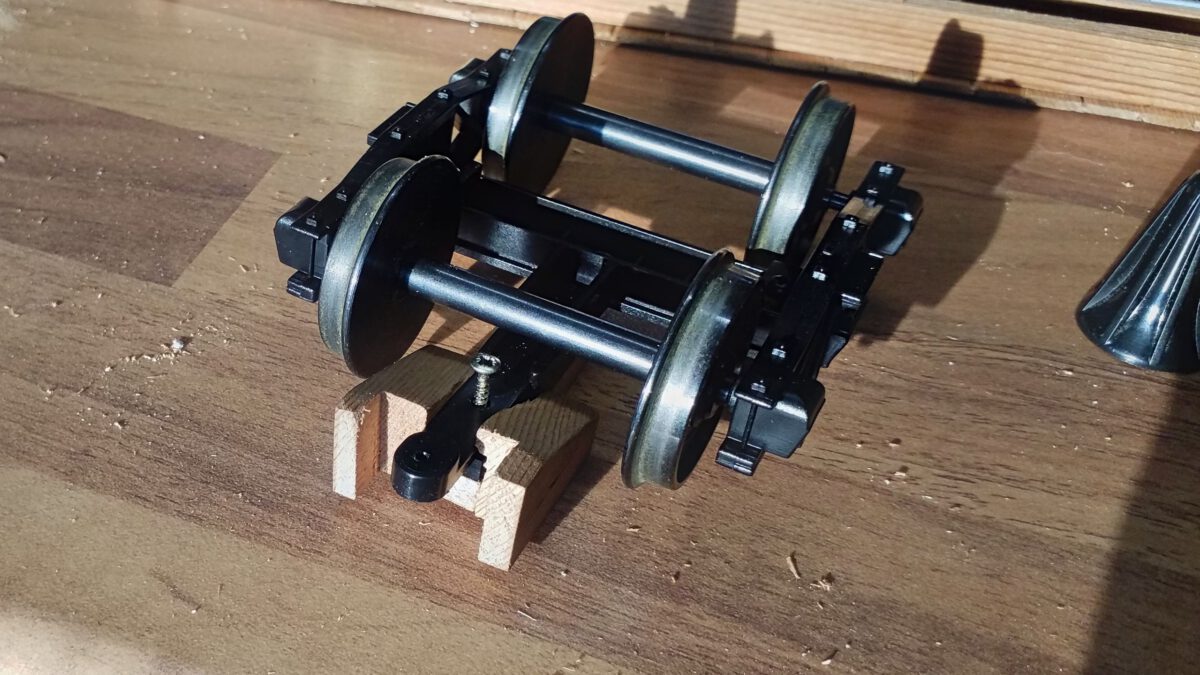Based on my lessons learned during the last operation session, I’ve already started to mount couplers to the bogies. The result works very well, however I’m not quite happy with the looks: too clumsy, too heavy. So I’m trying a more delicate approach for the second coupler.
Again, the coupler mounting is supposed to fit onto the bogie’s coupler beam on the one hand and imitate the draw timbers on the other in order to stay as true to the prototype as possible. Moreover, my first try saw quite an amount of bolts and nuts which I don’t like that much for it’s quite a material-heavy approach. So this time, I’m trying a leaner construction purely made from wood.
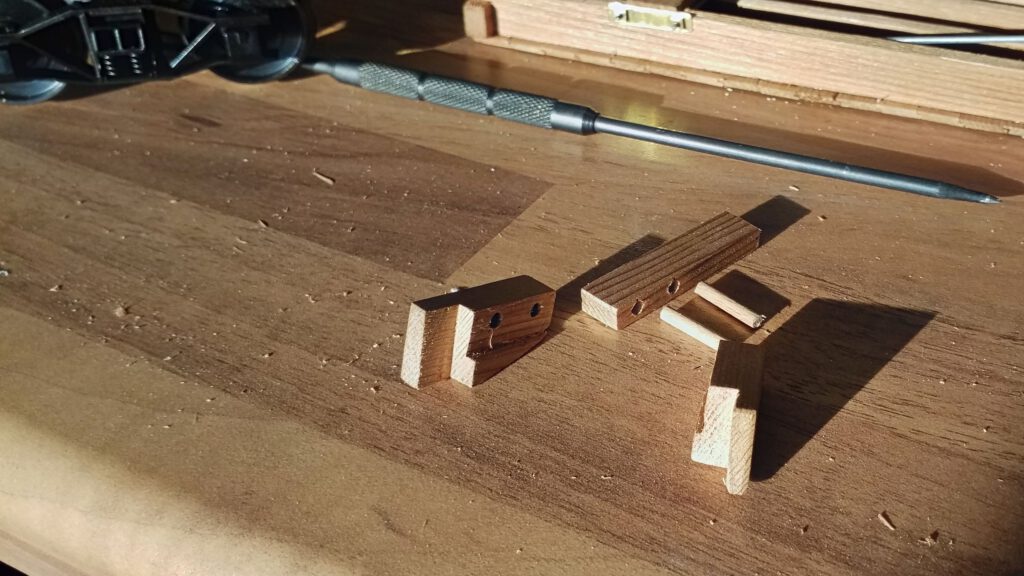
As one can see, it’s comprised of three parts: two jaws and a spacer. The jaws are cut from a small block of red cedar and then cut or rather milled into shape with the help of the circular saw. The whole contraption is connected with two wood pegs made from beech.
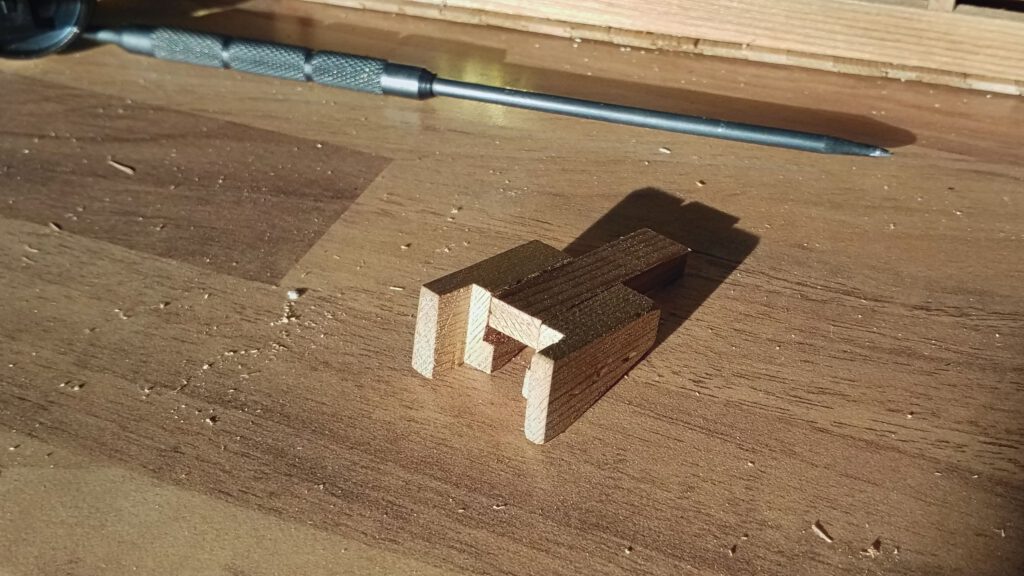
As soon as the coupler mounting has passed its fitting test, it’s glued together using white glue. With this mounting I make it a point to match the coupler beam’s contures, so that it can be fastened with a single screw and still form a tight fit.
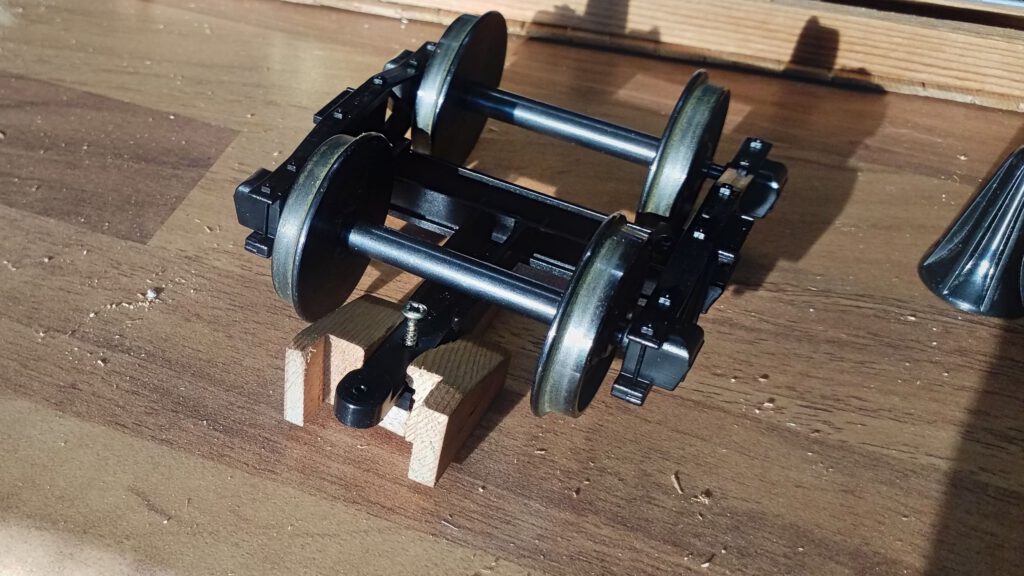
The coupler box is placed into the newly formed slot and fastened with a second screw. The protruding jaws help to ensure that the forces of pushing waggons are passed along without causing shearing forces.
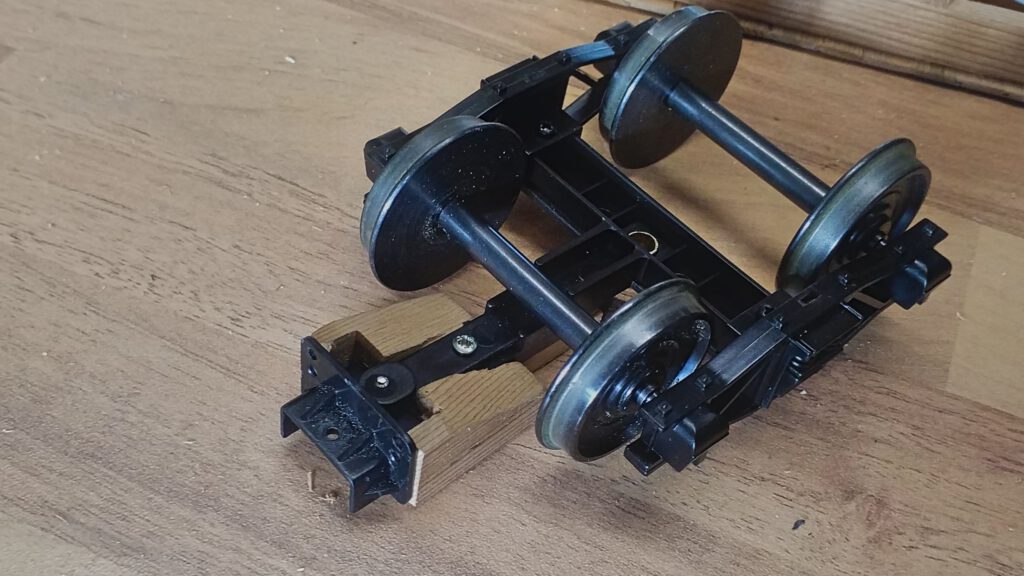
Finally the coupler box is secured with two short threaded rods which accept any pulling forces.
Comparing both variants, I clearly prefer this one, but it’s still not perfect. I’m already toying with the idea to trim down the coupler box in order to reduce its height. But maybe there are even better options..?
At any rate, next time I will get to the queenposts.

